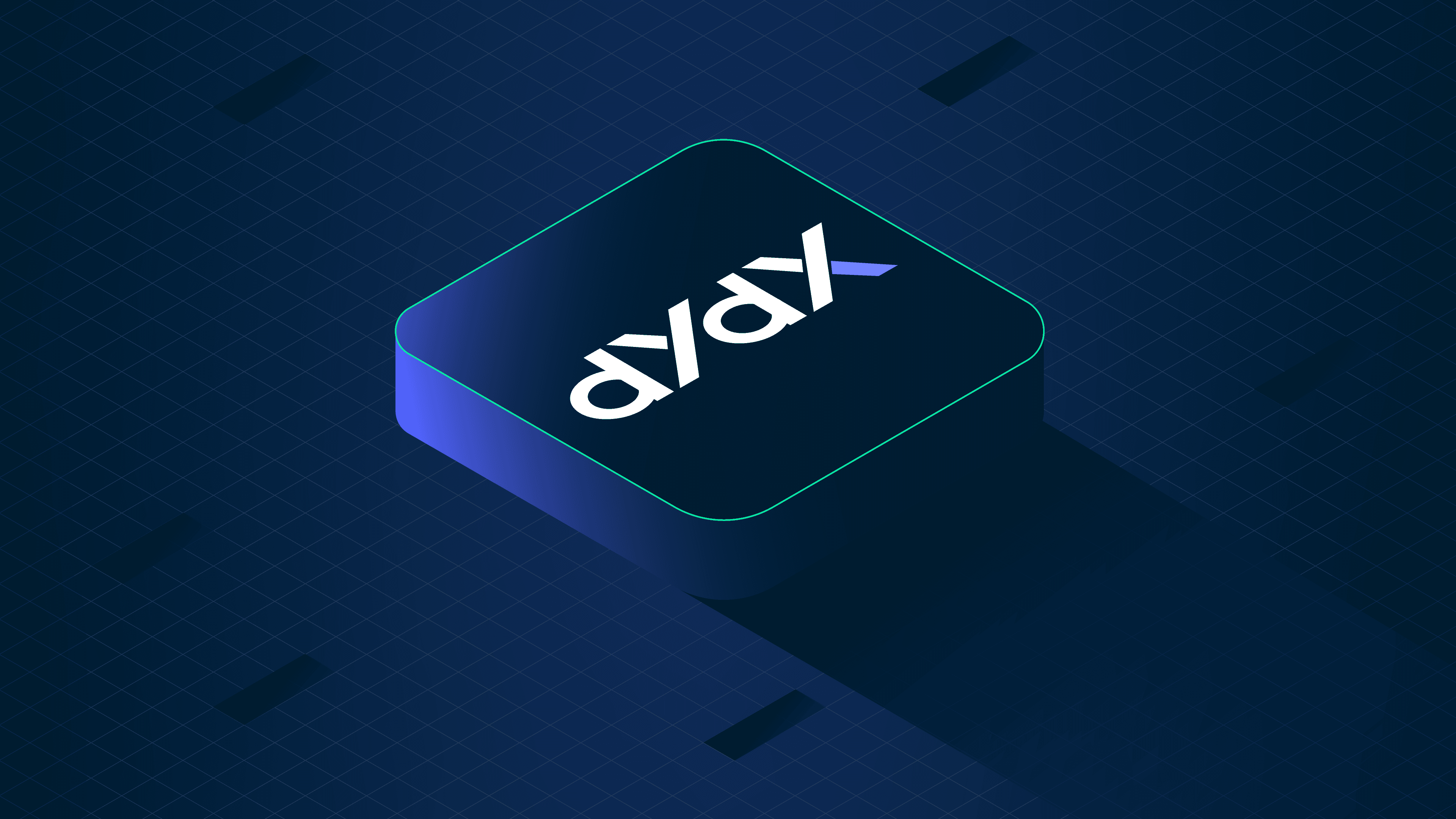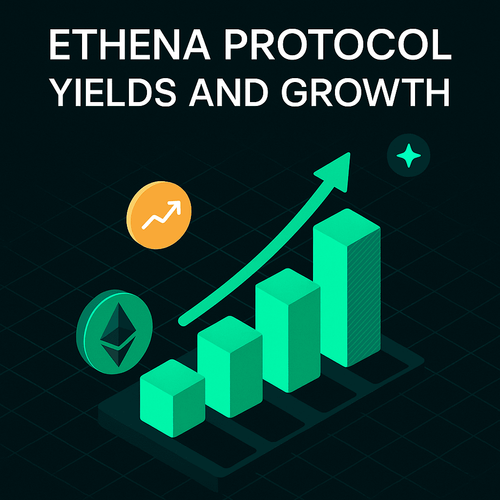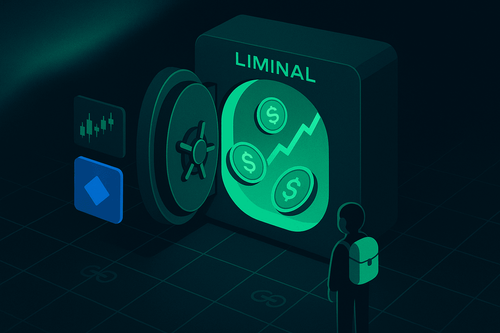We are becoming increasingly bullish on DYDX as we approach the v4 upgrade and see significant upside potential over the medium term:
- Decentralized perpetuals (“perps”) are a large market with clear product-market fit.
- We see this market growing over time and expanding to asset classes outside crypto (equity derivatives, FX, commodities, prediction markets). Similarly, we expect decentralized platforms to increase their share relative to centralized.
- We think the sector is winner-take-most and see DYDX as the current leader with what appears to be the best UX, the highest liquidity and the lowest fees.
- We see higher fees as a fairly easy route to materially higher revenues with low risk of market share loss.
- We can plausibly see cash staking yields of >10% post v4 launch based on YTD financials.
- Our 2025 base case implies a PE ratio of ~6x, and our bull case is <1x.
- Technicals appear favorable on a USD and ETH basis, positioning in spot and perps is fairly neutral and we have seen ‘smart money’ (i.e. institutional market participants generally accumulating in recent weeks and months).
- Risk reward at these levels is therefore very attractive, and we have started to accumulate a long position.
DYDX as a long-term growth play
By analogy, when looking for growth in traditional companies, ideally you are looking for:
- A large and growing TAM.
- Dominant and sustainable market share.
- Ability to charge high prices / gross margins on a sustainable basis.
- Operational leverage / low cost base => high EBIT & FCF margins.
- = High FCF generation which can be used for capex, buybacks, dividends or strategic M&A.
In the early 2010s, Apple held dominance in the growing smartphone market. Apple could charge a premium due to a loyal fanbase for its superior products and exercise significant control over their supply chain and labour costs. One can argue NVDA has much of that right now – leadership in the difficult-to-disrupt GPU space at the start of a once-in-a-generation AI boom, giving them a significant lead versus competitors in both cost and quality. This means higher free cash flow generation versus peers, which can be reinvested in capex or M&A to maintain their competitive lead.
In crypto however, very few projects can claim to have a genuine ‘moat’ (by which we mean a sustainable competitive advantage) like NVDA. Barriers to entry are low, competition is fierce, disruptors can use their token to incentivize mercenary users to leave and highly incentivized teams are constantly inventing better products. This is great for innovation but generally bad for later stage purchasers of specific tokens and, as a result, holding BTC and ETH usually outperforms over time.
In our view, DYDX bucks the trend. Let’s use our growth product analogy from above, and we will discuss these points more thoroughly in the coming paragraphs:
- TAM – volumes are currently ~$100bn / day across futures and perps with perps accounting for ~90% of this (based on Coingecko data). Going forward, we believe DYDX will be targeting new markets such as equity derivatives, spot crypto, predictions and options.
- Market Share – DYDX are dominant in the decentralized space with ~60% market share, representing ~1% of the total perps market. Their share of the total market has modestly increased over the past year, but remains in the 1% range. We see upside to this going forward, particularly as the CEX landscape continues to evolve.
- Pricing & Gross Margins – DYDX’s fees are significantly below peers’ currently, which presents an easy-to-implement revenue lever. Moreover, we feel DYDX has a better UX and tighter spreads compared to DEX peers, which would otherwise justify a premium on fees.
- Operational Leverage & Cost Base – Post v4 launch, DYDX has suggested that DYDX Trading will continue to bear software development costs (link), which we assume would leave the majority of revenues available to the DAO/stakers. If that is the case, it should lead to attractive initial staking yields, which will be in USDC (i.e. rather than token inflation).
TAM and Market Share
Decentralized perps are one of crypto’s killer apps with particularly strong product-market fit for hedging and speculative trading. Market participants are unlikely to want to trade spot on Uniswap at 30bp + gas when they can trade for 2-10bp at zero (or close to zero) gas, with leverage. We think the on-chain perps model is easily applicable to other asset classes such as FX, commodities and equities and is frankly better and lower cost than comparable spread trading platforms in TradFi, especially once factoring in hidden fees such as adverse futures funding rates. In the UK, for example, roughly 75% of traders on spread betting platforms lose money, partly due to baked in, sometimes opaque fees.
In terms of market share, with ~60% of the decentralized perps market, DYDX is the clear segment leader. With YTD daily volumes of about $1bn (admittedly slightly lower in recent weeks), a well-designed UX, and industry-leading spreads and liquidity, we think they are well positioned to maintain their lead. For instance, their CLOB (central limit order book) interface is a trading experience many users are accustomed to that avoids the complexities of the AMM structure, and users are generally fairly sticky. We expect the perps market to evolve in a fashion similar to spot, where Uniswap has ~70-80% market share—a figure that has been relatively stable over time despite competition. But most importantly for DYDX, AMMs generally require LPs to provide liquidity, and these LPs need to be compensated with a significant fee share, whereas in the case of DYDX revenues don’t need to be shared with LPs (as DYDX is CLOB-based) and can be retained by stakers, or used to reduce fees.
While maintaining its lead in the decentralized space is critical to long-term success, we are also looking to the centralized perpetual space as an avenue for market share growth. Until last year, perps DEXes had a hard time competing with CEX incumbents for perps volumes. We think this is changing in a post-FTX world as more of the market is acutely aware of the risks of having funds on exchange. We estimate daily CEX futures and perps volumes are down ~20% over the last 6 months versus roughly flat at DYDX (assuming $1bn per day). This seems to present an opportunity for DYDX to capture more of the perp TAM as the highest-volume CLOB-based DEX.
Significant upside potential from fee increases & operational leverage
The evolving CEX landscape also has implications for DYDX’s fee structure. Currently, fees scale from 7bps (5bps taker + 2bps maker) to 2bps (2bps taker /0bps maker) for the highest volume institutions, with the average just above 2bps. This has partially been driven by competition with CEX fee structures in the past. As discussed, we feel competition in the space is diminishing and believe retail is fairly fee insensitive at these levels given how much traders are willing to spend on gas for on-chain spot transactions.
For context, GMX historically charged ~10bp (recently reduced to 5bp), Synthetix charges 5-10bp and Gains charges 8bp on notional size per trade – DYDX fees could therefore rise by 2-3x from here and still be competitive.
Our model illustrates the upside potential here – we think DYDX generates ~$80m pa in revenues. With the launch of v4, management has said that revenues will no longer accrue to DYDX Trading, implying they will likely accumulate to token holders and can be directed as determined by governance. For context, DYDX Trading is the corporate entity currently receiving platform trading revenues.
There has also been some discussion around forming several autonomous subDAOs in future, and there may well be some cost allocated as a result, though the magnitude of this is difficult to estimate. We have been conservative and assumed costs at 20% of revenues.

DYDX is moving from Starkware to a standalone blockchain, built using the Cosmos SDK, at the end of Q3 as per the current plan. The team deployed the private testnet over the last couple of months, and recently deployed the public testnet, which we understand has gone well so far.
Let’s assume that post v4 launch there are ~430m tokens in circulation, in line with forecast token issuance. In our model, this results in a cash yield of ~15%, assuming 50% of tokens are staked. That’s one of the higher staking yields around and we believe the highest in terms of pure fee/cash generation, (i.e. non-token inflation-driven), but this assumes no change to fee structure, volumes and share. Fees would arguably be the easiest lever to pull, and we think increasing fees to 4bps would be quickly achievable, with limited share loss, if any. This results in an 8x/18x (Circulating/Fully Diluted) PE and a USDC cash yield of ~25%.
We’ve also included our 2025 forecasts. The Base scenario has DYDX on a PE of 6x with a USDC yield of ~25%, and our Bull scenario (double the market size, 10% share, 10bps fees) leads to a PE of 0.4x and ~400% USDC yield based on current market cap. This is aggressive but not ridiculous when you consider UNI has a 10-15% share of spot volumes and charges 30bps, and we are going into a Bitcoin halving next year.
Overall, we think these forecasts imply a realistic case of significant upside post v4.
Thoughts on v4 and the move to Cosmos
We believe DYDX is moving to Cosmos for a variety of reasons:
- Customizability to allow node operators to run an order book off chain with only filled orders settling on chain.
- A greater degree of decentralization versus using, for example, an L2’s centralized sequencer
- Gas can be kept low and accrue to DYDX validators/delegators (rather than ETH validators), or trades could be gas free/negligible.
- MEV can be kept within the ecosystem and given to DYDX validators. Having customizability over their own chain allows DYDX to optimally address any negative externalities of MEV (e.g. validators ordering trades).
- Mesh security, which is forecast to go live on Cosmos early next year, will enable DYDX stakers to secure other chains and earn a yield for doing so. This could augment yields even further (similar to EigenLayer).
One aspect we think has been overlooked is the impact of a new validator set having to acquire sufficient DYDX to secure the chain. Looking at leading Cosmos chains including OSMO and RUNE, ~1/3 of circulating supply is staked. It’s not clear how exactly this will work ahead of time, but one would expect that a validator set would need to be bootstrapped before DYDX holders can delegate to these validators. This could potentially lead to meaningful buy pressure if validators need to acquire any of these tokens directly from the market.
Clearly the transition to v4 is not without risk. The move appears to be going well so far, but moving a platform with volumes of ~$1bn per day to a new chain, with the added challenge of spinning up a new validator set, is no small feat. Whilst Cosmos now has USDC on chain, there is also the added risk of losing Ethereum-based users through churn/ inertia, though this is likely manageable, as users already have to bridge to StarkNet and so should be willing to bridge assets to Cosmos.
Technicals, positioning and on-chain thoughts
We think the setup for DYDX is currently attractive. The chart is at a 61.8% retrace of the Jan/Feb move and appears to be in an uptrend since June lows, with a pull back from recent highs. DYDX/ETH meanwhile has retraced ~85%. Both charts look fairly neutral on an RSI basis.


Looking at the perps market, positioning appears fairly neutral, but we can see open interest shows likely significant short covering in January, followed by long OI build in late January in the run to $3.20. This long biased OI has somewhat discharged since March, which removes the long positioning overhang.
Similarly, liquidations have generally been biased to long positions (i.e. the market has been pushed down by liquidations rather than up).

In terms of on-chain analysis, we have seen increasing ‘smart money’ balances throughout the year and over the last 30 days have seen institutions/large wallets net acquiring tokens, with, for example, CMS initiating a new position around $2.18, 2-3 weeks ago.
Risks
- Token supply - Earlier this year, the team and investor allocation unlocks were pushed out to December 2023. This will increase tokens in circulation from ~260m to ~440m and rising thereafter, which is clearly a potential headwind for the token and might dampen the impact of the v4 catalyst. However, as shown in our model above, we think that USDC staking yields could be in the region of 30% over the medium term (at current market cap) and newly vested supply (at these prices at least) would likely be incentivized to stake and ‘HODL’.
- Competition – Perps are an extremely competitive space with relatively low barriers to entry, though we believe liquidity and institutional credibility/market share is a significant ‘moat’. GMX are also reducing fees under v2 to ~5bp.
- Execution risk on v4 transition - As with any technology upgrade, there is a potential for it to be delayed or be met with issues.
- Regulation – The global regulatory landscape is continuing to evolve, and it is possible changes emerge that affect DYDX.
Disclaimer
The information (“Information”) provided by Cumberland DRW LLC and its affiliated or related companies (collectively, “Cumberland”), either in this document or otherwise, is for informational purposes only and is provided without charge. Cumberland is a principal trading firm; it is not and does not act as a fiduciary or adviser, or in any similar capacity, in providing the Information, and the Information may not be relied upon as investment, financial, legal, tax, regulatory, or any other type of advice. The Information has not been prepared or tailored to address, and may not be suitable or appropriate for the particular financial needs, circumstances, or requirements of any person, and it should not be the basis for making any investment or transaction decision. THE INFORMATION IS NOT A RECOMMENDATION TO ENGAGE IN ANY TRANSACTION. If any person elects to enter into transactions with Cumberland, whether as a result of the Information or otherwise, Cumberland will enter into such transactions as principal only and will act solely in its own best interests, which may be adverse to the interests of such person. Before entering into any such transaction, you should conduct your own research and obtain your own advice as to whether the transaction is appropriate for your specific circumstances. In addition, any person wishing to enter into transactions with Cumberland must satisfy Cumberland’s eligibility requirements.
Cumberland may be subject to certain conflicts of interest in connection with the provision of the Information. For example, Cumberland may, but does not necessarily, hold or control positions in the cryptoasset(s) discussed in the Information, and transactions entered into by Cumberland could affect the relevant markets in ways that are adverse to a counterparty of Cumberland. Cumberland may engage in transactions in a manner inconsistent with the views expressed in the Information.
Cumberland makes no representations or warranties (express or implied) regarding, nor shall it have any responsibility or liability for the accuracy, adequacy, timeliness, or completeness of, the Information, and no representation is made or is to be implied that the Information will remain unchanged. Cumberland undertakes no duty to amend, correct, update, or otherwise supplement the Information.
The virtual currency industry is subject to a range of risks, including but not limited to: price volatility, limited liquidity, limited and incomplete information regarding certain instruments, products, or cryptoassets, and a still emerging and evolving regulatory environment. The past performance of any instruments, products, or cryptoassets addressed in the Information is not a guide to future performance, nor is it a reliable indicator of future results or performance. Investing in virtual currencies involves significant risks and is not appropriate for many investors, including those without significant investment experience and capacity to assume significant risks.
Cumberland SG Pte. Ltd. is exempted by the Monetary Authority of Singapore (“MAS”) from holding a license to provide digital payment token (“DPT”) services. Please note that you may not be able to recover all the money or DPTs you paid to a DPT service provider if the DPT service provider’s business fails. You should not transact in a DPT if you are not familiar with the DPT. This includes how the DPT is created, and how the DPT you intend to transact is transferred or held by your DPT service provider. You should be aware that the value of DPTs may fluctuate greatly. You should buy DPTs only if you are prepared to accept the risk of losing all of the money you put into such tokens. You should be aware that your DPT service provider, as part of its license to provide DPT services, may offer services related to DPTs which are promoted as having a stable value, commonly known as “stablecoins."




